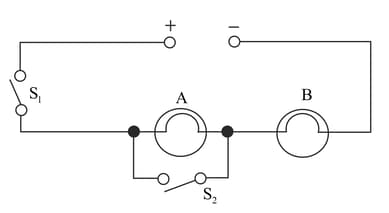Why is a series arrangement not used for connecting domestic electrical appliances in a circuit?

Important Questions on Electricity
(a) Which circuit would have the highest voltage across each bulb?
(b) In which circuit would the bulbs be brighter?
(c) In which circuit, if one bulb blows out, all others will stop glowing?
(d) Which circuit would have less current in it?

(a) In which circuit are the lamps dimmest?
(b) In which circuit or circuits are the lamps of equal brightness as compared to the lamps in a circuit (i)?
(c) Which circuit gives out the maximum light?
(a) Which is the better way to connect lights and other electrical appliances in domestic wiring: series circuits or parallel circuits? Why?
(b) Christmas tree lamps are usually wired in series. What happens if one lamp breaks?
(c) An electrician has wired a house in such a way that if a lamp gets fused in one room of the house, all the lamps in other rooms of the house stop working. What is the defect in the wiring?
(d) Draw a circuit diagram showing two electric lamps connected in parallel together with a cell and a switch that works with both lamps.
Mark an (A) on your diagram to show where an ammeter should be placed to measure the current.
Using the circuit given below, state which of the following statement is correct?

(a) Draw a circuit diagram showing two lamps, one cell and a switch connected in series.
(b) How can you change the brightness of the lamps?
